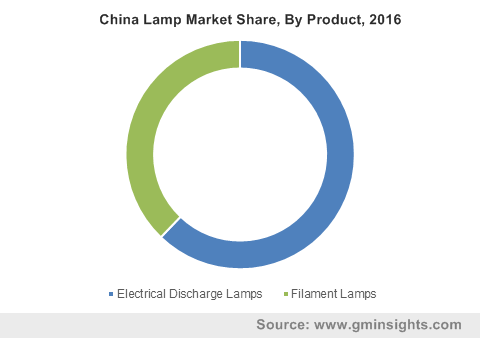Home > Semiconductors & Electronics > Lighting > Lamp Market
Lamp Market Size
- Report ID: GMI1566
- Published Date: May 2017
- Report Format: PDF
Lamp Market Size
Lamp Market size exceeded USD 40 billion in 2016, with global shipments of over 32 billion.

Increased usage in various indoor and outdoor applications such as residential, commercial, industrial, highways, and automobiles has augmented the lamp market growth. Government initiatives for increasing lighting facilities in rural areas has increased the overall industry demand.
The U.S. Department of Energy has issued new regulations related to the efficiency of fluorescent lamp ballasts which took effect from November 2014. These rules have created new metric standards for measuring ballast efficiency and have established efficiency standards impacting many fluorescent T5, T8, & T12 ballasts in the industry. According to the rules, these ballasts are expected to save about 5.6 quads of energy resulting in USD 24.1 billion in energy savings for the products shipped from 2014 – 2043. These standards are estimated to avoid 106 million metric tons of CO2 emissions.
| Report Attribute | Details |
|---|---|
| Base Year: | 2016 |
| Forecast Period: | 2017 to 2024 |
| Historical Data for: | 2013 to 2016 |
| No. of Pages: | 180 |
| Tables, Charts & Figures: | 313 |
| Segments covered: | Product, Application and Region |
The ban on incandescent bulbs will negatively affect the lamp market as the consumers are shifting toward modern technologies such as LEDs and CFLs that save energy and are highly-efficient alternatives for these bulbs. High energy consumption costs of bulbs as compared to LED lamps act as a restraint for this industry. Halogen and fluorescent bulbs produce more heat and thus result in more energy consumption. LEDs utilize 90% less energy and last approximately 15 times longer than the halogen bulbs. Moreover, government initiatives across the globe for the implementation of LED use has negatively affected the lamp market demand.
